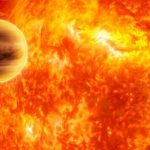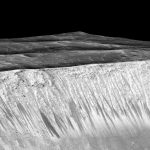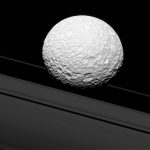Planet Remains Found Scattered Over ‘Death Star’0
- From Around the Web, Space
- December 24, 2016
A star with a strange composition has been spotted and astronomers think that it has just eaten an exoplanetary lunch.

A star with a strange composition has been spotted and astronomers think that it has just eaten an exoplanetary lunch.

Google Lunar X-Prize contestant Team HAKUTO has a promising rover that will be launched to the moon in the new year.

A couple of scientists have considered how the search for extraterrestrial intelligence is conducted and, working off the idea that sufficiently advanced alien beings would at least attempt to build defensive structures around their world to defend against potentially catastrophic extraplanetary threats, suggest that one way such beings might be found would be through their defense systems. In fact, the scientists contend, the aliens would not necessarily have to be much more advanced than humans.

Scientists with the China Academy of Space Technology (CAST) claim NASA’s results ‘re-confirm’ what they’d already achieved, and have plans to implement it in satellites ‘as quickly as possible.’

Located in the area of Terra Meridiani, researchers have spotted three massive ‘Towers’ on the Martian Surface that are so perfectly aligned, that just as the Pyramids of Giza on Earth, these Martian towers seem to mimic the constellation of Orion.

The intriguing story of Mars’ mysterious dark streaks may have a new twist.

All you need is a wormhole, the Large Hadron Collider or a rocket that goes really, really fast.

Saturn’s moon, Mimas, is on a crash course through Saturn’s rings as it gets closer to the planet’s surface.

ESA’s Rosetta completed its incredible mission on 30 September, collecting unprecedented images and data right until the moment of contact with the comet’s surface.

Titan, one of Saturn’s moons, is probably the best option to sustain life for future generations.



